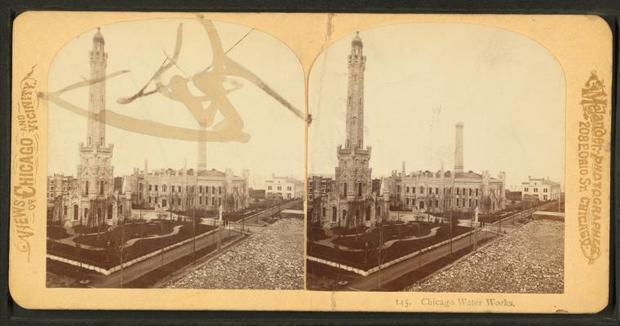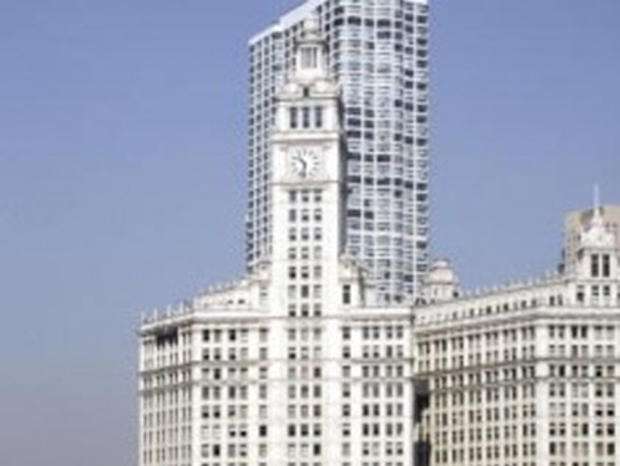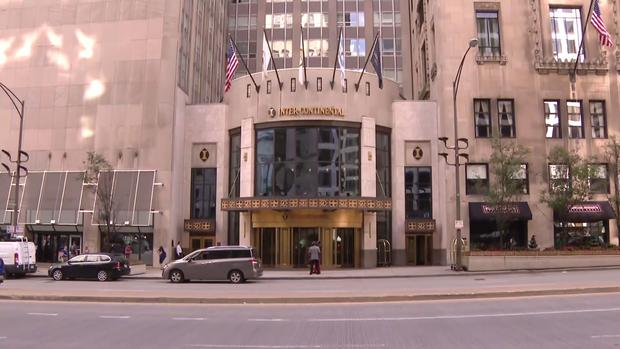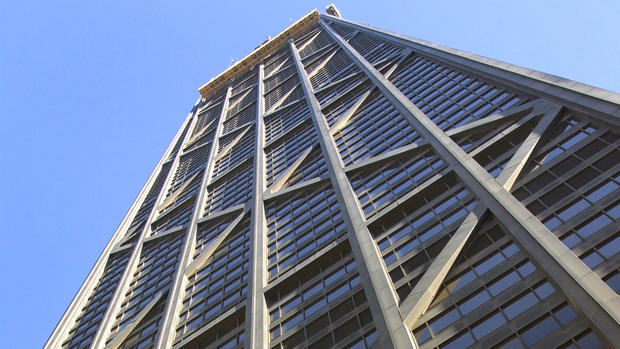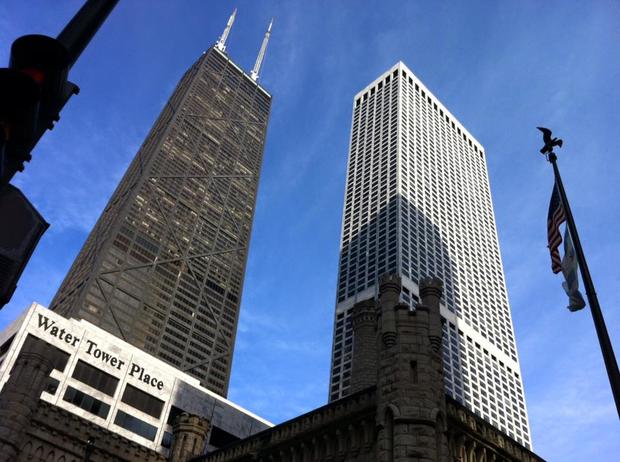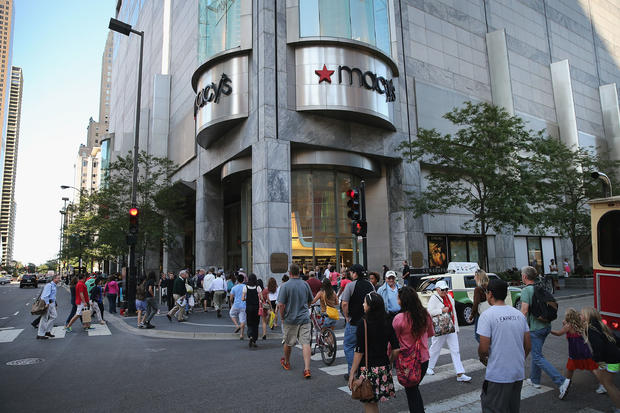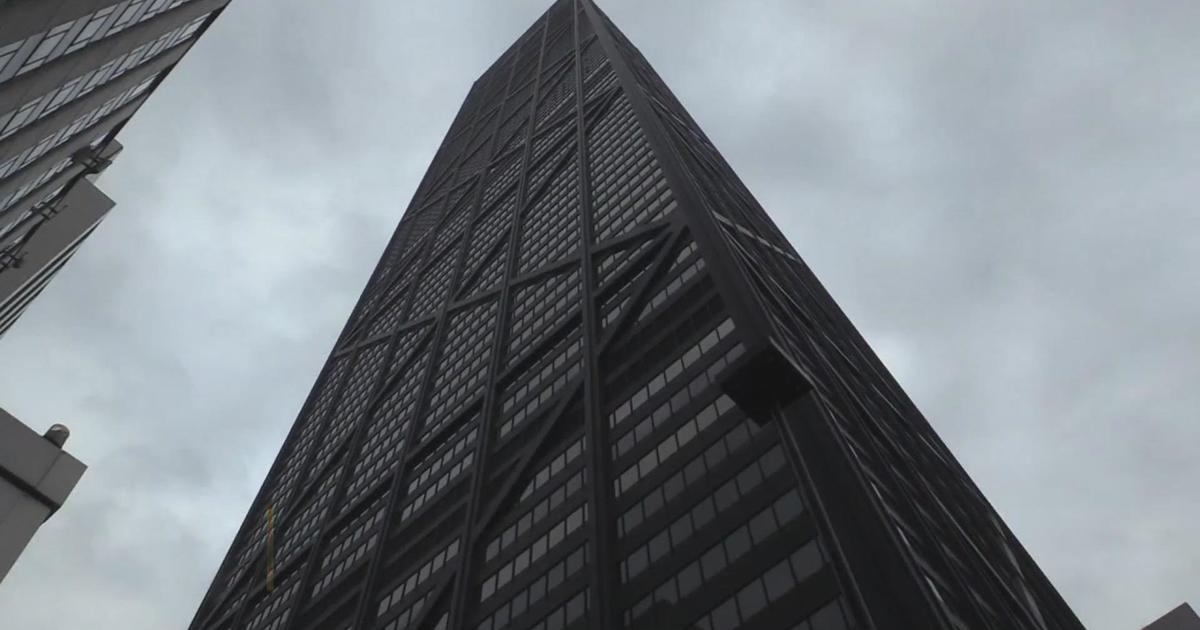A Brief History Of The Magnificent Mile On Michigan Avenue
CHICAGO (CBS) -- The opening of the world's largest Starbucks Coffee in the old Crate & Barrel building is the latest development in the evolution of the Magnificent Mile over the more than 150 years.
"There's really no other boulevard in the Midwest that attracts this many people; is as interesting for retail and experiences, as this street is," Crate & Barrel founder Gordon Segal told CBS 2's Yasmeen Hassan.
South of the Chicago River's main branch, Michigan Avenue – once known as Michigan Boulevard or colloquially, "Boul Mich" – was redeveloped as an elegant lakefront promenade following the Great Chicago Fire of 1871. But what is now Michigan Avenue north of the river was a different street altogether known as Pine Street – with no bridge at the time to connect it below the river.
The Chicago Water Tower and Pumping Station were constructed on the old and narrower Pine Street between 1867 and 1869, and they were among the only buildings to survive the Great Chicago Fire. Elegant mansions also lined the street.
North of Ohio Street, the road was later renamed Lincoln Park Boulevard – while confusingly, what is now the east-west cross street of Hubbard Street was then known as Michigan Street.
Plans for a double-decker bridge at Pine Street were proposed as early as 1888, and such institutions as the Chicago Tribune and the Chicago Real Estate Board got on board with the idea around the turn of the last century, the Chicago Reader's Ben Joravsky recalled in a 1991 article.
The City Council approved the plan for the Michigan Avenue Bridge in 1905, and Daniel Burnham went on to include the bridge in his "Plan for Chicago." The city passed an ordinance approving the construction of the bridge in 1939.
The bridge opened in 1920, and Michigan Avenue became one road with the old Boul Mich and parts south now directly linked to the new North Michigan Avenue. The Michigan Avenue Bridge is now known as the DuSable Bridge.
From the turn of the last century through the 1920s, just west of North Michigan Avenue in what we now call River North lay the neighborhood of Towertown – which took its name from the Water Tower and was known as an enclave of artists and bohemians and one of the earliest Chicago gay and lesbian communities.
Meanwhile, right along Michigan Avenue, the Wrigley Building was completed in 1924 at the northwest corner of Michigan Avenue and the Chicago River. As the Magnificent Mile website points out, the Wrigley Building rises 21 stories in its north section and 30 in its south section; the latter also includes a tower and the famous two-story clock.
The architecture for the Wrigley Building is modeled after the Seville Cathedral's Giralda Tower in Spain, the Mag Mile website said. Architect Charles Beersman chose the tiles for the exterior of the building in six different shades – from off-white at the base to blue-white at the top, to increase the brightness of the building going upward, the Mag Mile website said.
Meanwhile, Tribune Tower rose on the east side of Michigan Avenue as a new home for the Chicago Tribune following an international architecture competition. John Meade Howells and Raymond Hood won the contest with a neo-Gothic tower with buttresses at the peak. Stones taken from landmarks from the Taj Mahal and Angkor Wat to the Alamo and Lincoln's tomb were embedded in the exterior of the building at the request of Tribune owner and publisher Robert R. McCormick.
Tribune Tower was completed in 1925.
The Roaring '20s also saw the addition of the Allerton Hotel – completed in 1924; the InterContinental Chicago hotel that began life as the Medinah Athletic Club – completed in 1929; the Palmolive Building, also known for many years as the Playboy Building and also completed in 1929; and the Drake Hotel, completed in 1920.
The booming expansion of North Michigan Avenue was cut short when the Great Depression began in 1929. But in 1947, with a new boom beginning following World War II, real estate developer Arthur Rubloff launched a new campaign to revitalize North Michigan Avenue with both new development and renovations.
It was Rubloff who gave the 13-block stretch of North Michigan Avenue from the river to Oak Street/Lake Shore Drive the name the Magnificent Mile.
In 1965, construction began on what remains the tallest building on the Magnificent Mile – which for generations of Chicagoans has stood sentry at the front of the skyline when looking south from any north lakefront beach or heading downtown on Lake Shore Drive. The John Hancock Center was completed in 1969 between Delaware and Chestnut streets – with its distinctive X-shaped bracing across its trapezoidal frame, and its pair of broadcast antenna spires at the peak.
The John Hancock Center is now officially known by its address of 875 N. Michigan Ave., but is rarely called anything other than its old name or its nickname, "Big John." It houses both residences and commercial space and is world famous for its 360 Chicago observatory and its Signature Room restaurant on the 95th floor.
Just south of Big John, Water Tower Place with is gray marble façade opened in 1976 as the first urban vertical mall in the country, the Magnificent Mile website noted.
The One Magnificent Mile tower at the north end of the Mag Mile was completed in 1983. The 900 North Michigan building, with its Bloomingdale's store and its four turrets on each corner of the roof, followed in 1988. New hotels, residences, and retailers gave the Mag Mile regular facelifts through the 1990s and 2000s.
And with 2019 soon to wrap up, the evolution of the Magnificent Mile presses on. The Chicago Tribune has sold the Tribune Tower and moved on to One Prudential Plaza, while the Tribune Tower is being redeveloped as luxury condos.
And in the former Crate & Barrel building at 646 N. Michigan Ave. – opened in 1990 – the Chicago Starbucks Reserve Roastery, and the world's largest Starbucks, opens Friday. Meanwhile, the Mag Mile website notes, other new tenants continue to move in and keep the Mag Mile fresh, and Chicagoans and tourists alike flock to the grand promenade for the BMO Harris Bank Magnificent Mile Lights Festival.
This year's Lights Festival will be held on Friday, Nov. 22 and Saturday, Nov. 23.
